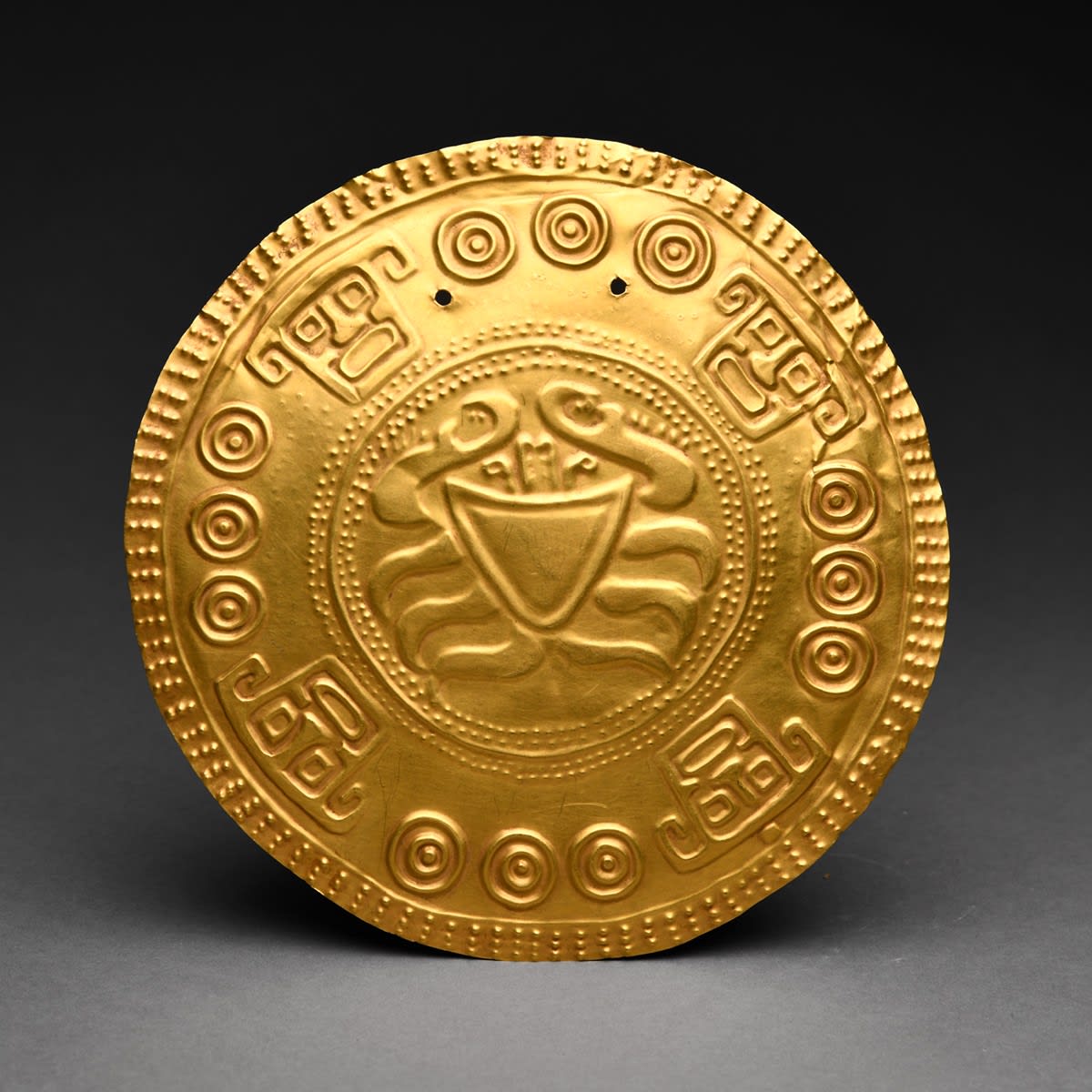Gold Pectoral Disc, 8th Century CE - 12th Century CE
Gold
height 17.8 cm
height 7 in
80 Grams
height 7 in
80 Grams
FJ.6351
Pectoral discs are one of the most dramatic creations of Panamanian goldsmiths. The Spaniard, Fernandez Guardia, writes upon seeing these objects, '...but in the plates (discs), which they beat and...
Pectoral discs are one of the most dramatic creations of Panamanian goldsmiths. The Spaniard, Fernandez Guardia, writes upon seeing these objects, "...but in the plates (discs), which they beat and extend without having to mix (with copper), the purity of the gold is noteworthy, reaching 22 karats." This gorgeous pectoral was probably worn by an important chief or warrior, who had earned the right to be adorned by an object so brilliant. The iconography is typically Panamanian, with the four faces grinning and staring as if at a vision. They are separated by four sets of three circles each composed of an inner circle and an ebossed center. The crab symbol may be connected with mythology, or be an emblem of the person who wore the pectoral. When seeing this beautiful work of art, it is no wonder Christopher Columbus was so impressed seeing the indigenous people of Panama wearing "mirrors" that glittered in the sun.



